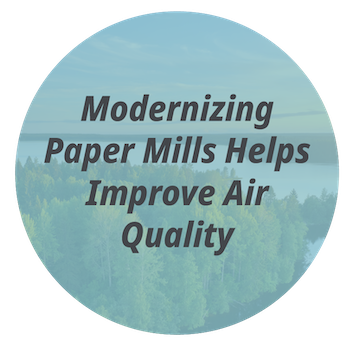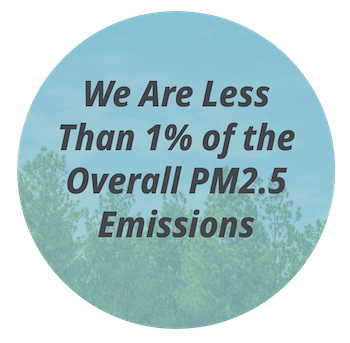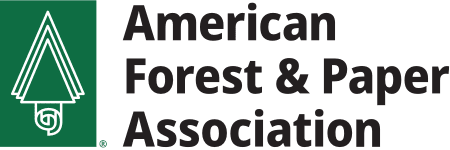Why EPA Should Not Finalize the Particulate Matter NAAQS Standard
The Need for Sustainable and Achievable Regulations
The Environmental Protection Agency (EPA) helps set national standards and guidelines to protect the environment. All Americans benefit when the EPA develops achievable rules and regulations.
We have a shared goal of sustainable regulation. In fact, we have a long track record of success working with the EPA to create achievable rules.
EPA is proposing an update to their National Ambient Air Quality Standards (NAAQS) for fine particulate matter, PM2.5. However, their proposal threatens manufacturing industries. Let’s explore why.
What is Fine Particulate Matter?
Fine particulate matter is made up of a mixture of tiny particles in the air. It includes things like dust, smoke, dirt, soot and exhaust fumes.
Fine particulate matter comes from many different sources like:
- Wildfires
- Road dust
- Vehicle exhaust
- Industrial facilities
Are Levels of Fine Particulate Matter Increasing or Decreasing?
The U.S. enjoys some of the cleanest air in the world today. Ambient air levels of PM 2.5 have been trending downward over the past 20 years.
Levels will continue declining due to other requirements that already exist.
What is the PM2.5 NAAQS Proposed Rule?
The proposed rule for PM2.5 NAAQS will further tighten the air quality standard for fine particulate matter.
The current standard for PM2.5 NAAQS is 12 ug/m3. This leaves room for economic growth and development, including modernization projects at our mills.
The proposed rule could tighten the standard close to average ambient air background levels, which are around 8 ug/m3. Background levels mean the average air quality from both natural and manmade sources.
The purpose of a permit is to make sure a new manufacturing modernization project doesn’t exceed the standard. A project receives a permit when there is sufficient “headroom” to allow the project.
Headroom is the difference between the standard and the background level that’s already in the air, including from natural sources like wildfires and road dust.
Under the current PM NAAQS standard, the typical headroom available for a new project is about 3 to 6 micrograms (ug). An average project adds around 3 ug. If you subtract the standard, 12 ug, from the current background levels, 8 ug, that gives you 4 ug.
A modernization project of 3 ug could proceed because it’s less than 4 ug. If it’s more than 4 ug, the project doesn’t receive a permit.
The maps show how lowering the standard shrinks the attainment areas. An attainment area is a location that meets the national air quality standard. Green shows what is in attainment and has sufficient headroom for a permit to allow mill modernization projects.
Red shows nonattainment areas, or locations that don’t meet the standard. Finally, pink shows other cleaner areas that are in attainment, but lack permit headroom for modernization projects to proceed.
Many of our paper mills are located in cleaner, attainment areas under the current standard. This allows modernization projects to receive a permit.

Any lowering of the standard will result in more non-attainment areas in the U.S. This would threaten many manufacturing industries, including the paper industry.
What’s concerning for paper mills is that many would now be in the pink area and would often not be able to get permits. Lowering the standard would threaten or prevent modernization projects and other major improvements to paper mills.
As our industry modernizes paper mills, we’re improving air quality.
Modernization projects help provide lower emissions per ton of production. That includes reductions in particulate matter, greenhouse gases, and other emissions.
This standard would also undermine the Biden Administration’s promise to grow and reshore U.S. manufacturing jobs. We need to be able to modernize our facilities so we can keep high-paying manufacturing jobs in the U.S.
Our industry is a leader in sustainability, and we are rooted in sustainable practices. Paper manufacturers work hard to be a good neighbor and environmental steward in communities across our nation.

Our facilities have made substantial progress in reducing our emissions. The paper industry has state-of-the-art air pollution controls on their facilities.
We are less than 1% of the overall PM2.5 emissions. We have decreased our nitrogen oxide emissions by about 50% and our sulfur dioxide emissions by more than 80% since 2000.
Some of the larger sources of particulate matter in the air are wildfires, dust and exhaust. The PM NAAQS rule does not address these larger sources.
Particulate matter emissions from industrial facilities will continue to go down in the years ahead under current air quality programs.
Fine particulate matter comes from many different sources. Some of the larger sources include:
- Wildfires
- Dust
- Exhaust fumes
Currently, the proposed PM2.5 rule does not account for these sources of particulate matter. And these sources of fine particulate matter directly impact public health.
Stationary sources included in the PM2.5 rule, which includes industrial facilities like paper mills, account for less than 20% of overall particulate matter emissions.
Those emissions will continue to go down under current air quality programs.
Wildfire smoke is one of the leading causes of particulate matter in the air.
Lowering the standard could prevent foresters and landowners from being able to use prescribed fires to prevent wildfires.
One of the best ways to manage and prevent wildfires is prescribed fires. They are planned fires that help meet sustainable forest management goals.
If larger sources of particulate matter are not addressed, then air quality will still be affected.
What Would Help the Paper Industry Meet the PM2.5 NAAQS Standard?
We sent a letter to the White House outlining our concerns with the proposed PM NAAQS standard. Additionally, along with 70 other manufacturing organizations, we warned of the economic consequences the proposed standard would cause.
The EPA needs to develop an implementation plan before finalizing this rule so our industry has a clear path to achieve it.
Currently, the proposed rule uses unrealistic modeling to determine what ambient air quality levels are. A plan based on sound science needs to rely on realistic modeling that accurately reflects real-world conditions.
And, by allowing modernization projects to proceed, we can continue to work to decrease our emissions.
We welcome the opportunity to work together on an efficient implementation plan.
Explore How the Paper Industry is Embracing Sustainability




